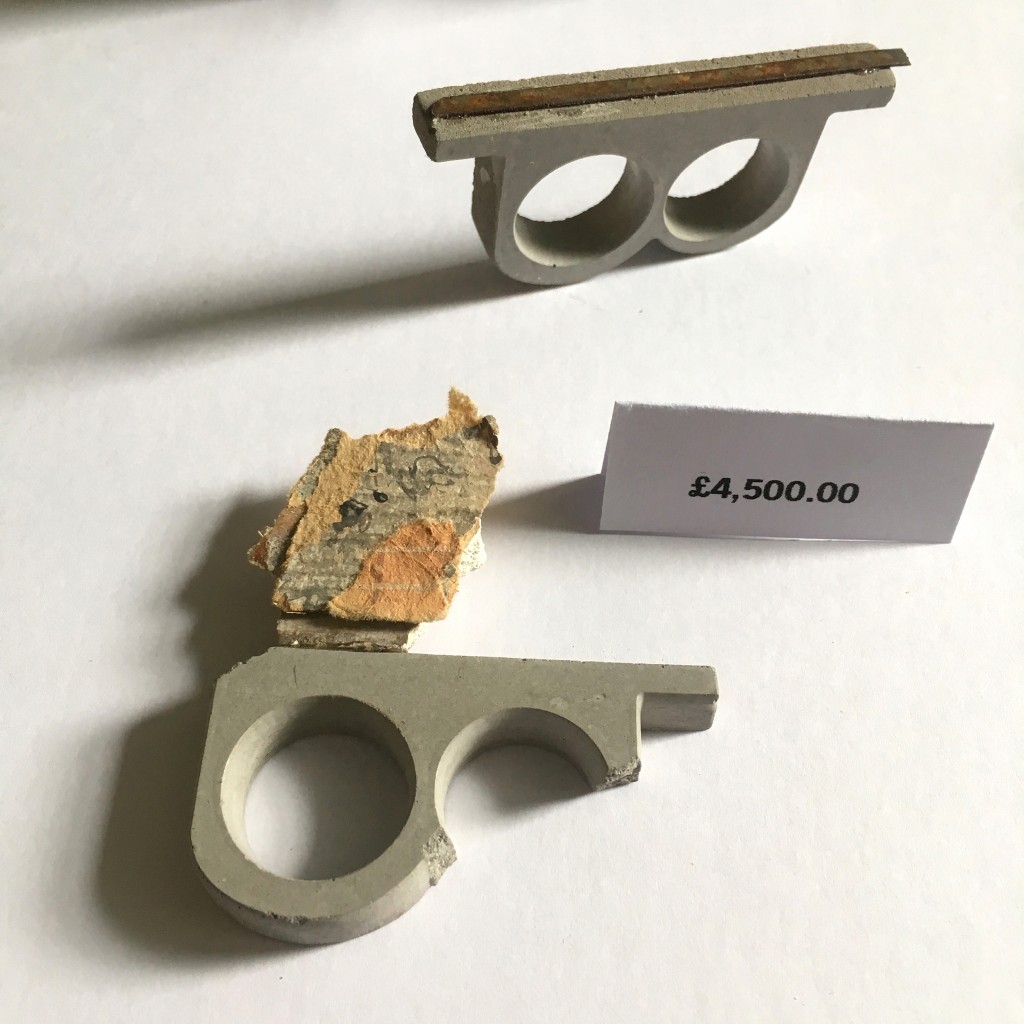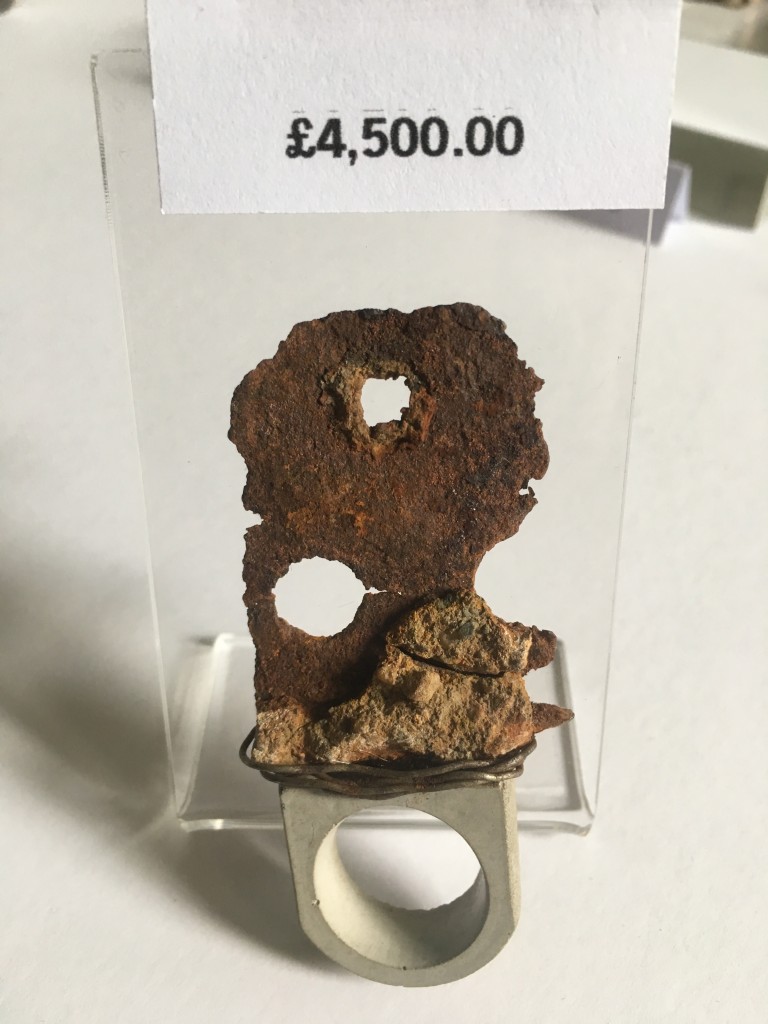ACT OF STITCHING | CHERNOBYL WALLS | JEWELS OF PRIPYAT | CONNECTEDNESS | RED THREAD
‘Physicality of an Aspiration’
This ‘work’ was created in situ in Chernobyl-2, during my second visit to the site of the Chernobyl disaster. I responded to my surroundings through the medium of stitch, meditatively, and for 2 hours, reflecting on those people who, in April 1986 had to suddenly leave their homes with just 2 hours’ notice. It was an intensely emotive experience, I felt a sense of emptiness, hopelessness and helplessness that was almost tangible.
It was 72 hours after the accident that it was decided to evacuate Pripyat. Residents were only allowed to take some food, a change of underwear, and their identity papers. By this time the inhabitants had all been exposed to large amounts of radiation. My personal response was to sit for 2 hours, completely alone and methodically and meditatively stitch, in those silent, abandoned surroundings and only try and imagine what that must have been like.
The numbers associated with the Chernobyl disaster have informed and horrified me; each figure varying widely relating to it’s source, making factual research quite difficult. Visually these figures/statistics are very condensed and clinical but look beyond and consider, really consider, what they mean and it is absolutely heartbreaking. There was much ‘covering up’ of the truth and official figures bear no relation to unofficial ones.
The Chernobyl nuclear disaster of 1986 had serious, far-reaching consequences, many of which are still relevant today and it rendered the area uninhabitable for 60,000 years.
| Exact date/time of explosion | 26.04.1986 at 01:23:44 |
| No. of men it took to save all of Europe | 3 |
| No. of hours before evacuation notice came | 72 |
| No. of hours notice to evacuate | 2 |
| Official death toll | 31 |
| Unofficial death toll | 300,000 – 985,000 |
| Total No. of displaced persons | 1,000,000 |
| No. people affected worldwide to date | unknown |
| No. of seconds of exposure to receive a fatal dose of radiation | 20 |
‘Disintegration 2016 -18’
Taking inspiration from the evacuated homes in Chernobyl, the layers, remains and the disintegration of past lives, the ghostly transparency of loss, dispersal and destruction, this work illustrates the effect of time on seemingly intangible transient stains.
This installation piece; a 3m length of double sided, hand printed and embroidered wallpaper, trickling with running water and visibly deteriorating over a period of time is multi layered with imagery and texture to indicate the depth of the related issues.
It encapsulates the sounds that can be heard when one stops, dead still in Pripyat.
This piece is responsive to the memory of my initial response to sitting, alone, in an abandoned home in Chernobyl-2, attempting to describe with meditative stitch, the emotions those surroundings evoked.
The melancholy nature of the piece is expressed by careful lighting which makes the piece in part dark, foreboding and textural and in others, transparent, evocative and ghostly. Inspiration from the sublime and personal beauty of the damp and dripping layers of papers, almost melting away, draped to the floor like fabric, that were so fragile they disintegrated to the touch, is communicated to the senses, provoking feelings of loss in the viewer.
This body of work was exhibited at Hartlepool Art Gallery Autumn 2017 as part of the exhibition: 30 Years On – Chernobyl Exposed by 26:86 Collective.
Beauty in the Ordinary
2017
A change in scale intimates the value and preciousness of tiny fragments of domestic wallpaper, actual specimens collected from the evacuated city of Pripyat in the Chernobyl exclusion zone itself. The inclusion of these tiny rescued pieces replace expected
‘precious’ jewels.
It is anticipated that there will be disintegration upon wearing.
There is beauty in the ordinary.
Inspiration comes from the sublime beauty of evocative layers of domestic wallpaper, so fragile they disintegrate to the touch, provoking feelings of loss and impermanence. Contrasts are shown in the heavy duty, shaped chunks of building materials, the change in scale of the focal wallpaper specimens ensuring intimacy and memory within the jewelry pieces.
The pricing of the pieces is an integral, critical and significant part of the concept.


Communicating during a Global Pandemic
This video demonstrates my efforts to continue some kind of communication process with the Babushkas through the Covid-19 pandemic, heartbroken because my travel plans were cancelled and I could not fulfil my promise to be with them in person. In ‘normal’ times any form of non-contact communication is difficult. Covid meant it was next to impossible, but I had to try. I wanted to send gifts. My relationships with these people are a gift, a two-way process enabling in-depth, authentic insights into their world.
Visual research is underpinned by theory, for example, Gift theory (Mauss, 1925), ‘describes the forms and functions of exchange in archaic society’ (relating to the self-settlers whole way of life). This theory also implies that through gift exchange an incredibly strong social bond is formed and the gift, ‘becomes an almost spiritual artefact. The gift is irreversibly tied to the giver – particularly true in the case of a handmade object.
I began to make personalised, portable (postable) icons based on those I had seen so often in the zone. Designs incorporate similar materials and composition as the domestic-icon examples in the rural village homes, many abandoned. There were 12 packages including letters, which had been translated into Ukrainian.
The route was complex, it could fail at any stage and was absolutely dependant on my existing contacts as facilitators.
My parcel was couriered from UK to Kiev, retained by customs (no chocolates were allowed), pleaded for and eventually collected by a friend, then taken to the outskirts of the zone, the parcel was met by a man who lives on the border and works in the zone for the administration services. The individual packages were gradually taken through the checkpoints and personally delivered to the remote villages, some inaccessible in winter.
Some packages were too late. The process had taken six months and two of the intended recipients had sadly died during that time.
The Red Thread
11th October 2021 – 20th March 2022
MIMA
Solo exhibition at Middlesbrough Institute of Modern Art
Craft as legacy and textiles as material culture are significant. In daily life embroidery aligns with folkloric religious practices. Embroidery is key to this research not only because it is what brought researcher and Babushka together. Consideration is given to the rural peasant interior as a gallery of domestic religious icons and hand-crafted objects, underpinning the value the self-settlers themselves give to their crafts.
The connection between embroidered artefacts and the region’s religious culture is justification for producing investigative artworks informed by the making of icons. Researching, planning and making the icons led to discoveries about the vernacular religion of the Babushkas. Spiritually, ‘icons represent an invisible force [similar to] the ‘invisibility’ of radiation [and encourage] associations with supernatural forces, divine providence or demonic powers’ (Romashko, 2016). The underlying relationships give a gravity and resonance to the works.